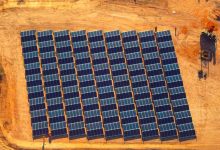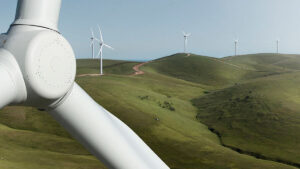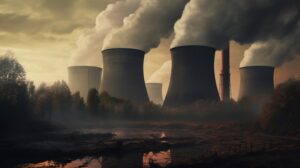The Australian Energy Market Operator is to model even faster paths to net zero emissions, with a new “Export Superpower” scenario to assume Australia will reach net zero emissions in the early 2040s, and the electricity grid will lead the way and achieve even more rapid emissions cuts.
AEMO – whose job is primarily to keep the lights on in Australia’s main grids – broke new ground earlier this year with the release of the second version of its Integrated System Plan, a 20-year blueprint that included a “step change” scenario that assumed 94 per cent renewables share by 2040 as technology costs fell and the world woke from its climate slumber to take decisive action.
A new 180 page document – its 2021 Draft Inputs Assumptions and Scenarios report – goes even further, and suggests new scenarios that include Australia reaching net zero emissions as early as 2040, with the electricity sector – where emission cuts are seen as more readily achievable – delivering even more rapid reductions. The plunging cost of green hydrogen will play an important role.
These assumptions will have some significance – not just for AEMO’s next planning document – but also in a country which has a federal Coalition government that refuses to set a timeline for net zero emissions beyond a vague promise to deliver it some time this century.
However, all Australia’s state governments – and most of Australia’s major trading partners – have a 2050 deadline for net zero emissions and if the world is to meet its 1.5°C target, emission cuts will have to be a lot faster than that.
Despite the political bluster, there are signs that Australia’s Coalition government is quietly preparing the path for faster emissions cuts than it might admit to the Murdoch media and its conservative rump.
Already, it has accepted the inevitability of a 50 per cent renewables share by 2050, despite claiming that such targets would cause the sky to fall in when it was proposed by Labor in last year’s election. And, as Ketan Joshi wrote this week, Angus Taylor’s official emissions forecasts appear to assume a faster cut in emissions than AEMO’s step change plan and an early exit for coal.
AEMO says its proposed new scenarios are designed to ensure they are consistent with possible future global developments in the fight to limit climate change, and to anchor them to possible global changes as the world gets serious about meeting the 1.5°C target.
Both the “diversified technology” and “sustainable growth” scenarios aim to be part of efforts to limit average global warming to less than 2°C, while the “Export Superpower” scenario is consistent with limiting temperature increases to an average 1.5°C. And this has implications for Australia.
-
“A 1.5°C target sees domestic Australian emissions falling rapidly, reaching net zero in the early 2040s, while a 2°C target also reaches net zero before 2050,” AEMO notes in its draft report.
This will impose “carbon budgets” on the electricity and other sectors. And because electricity currently represents the largest source of emissions in Australia, and because AEMO is – for the moment at least – assuming at least some lingering fossil fuel generation by 2050 – it says the electricity sector has to reduce emissions more rapidly than other sectors in the early years to meet its share of the total carbon budget.
How all this pans out will be revealed in the next Integrated System Plan, which will update the 20-year blueprint for the energy transition. Already, the newly released NSW Liberal government’s renewable integration plan assumes a much faster pace of wind and solar and storage deployment than in this year’s ISP, and it is clear that this is still not fully factored in to this latest document.
But based on the new CSIRO and AEMO GenCost report, there will be no holding back. It is abundantly clear – as all state energy ministers point out – that wind and solar offer the cheapest and most reliable new energy source, even after factoring in storage and network costs.
“The proposed Export Superpower scenario results in a significantly lower (carbon) budget than the 2020 ISP’s Step Change scenario over the period 2021-2050 due to the more ambitious global decarbonisation target,” AEMO notes.
Those budgets are reflected in the tables above. And it’s important to note that the South Australia state Liberal government has thrown its support behind the green hydrogen transition, releasing a new climate plan that aims for 500 per cent renewables by 2050.
That means it will produce five times more than it needs for domestic electricity consumption, so hydrogen can be used in manufacturing or exported in various forms to other Australian states or international customers. Clearly, this is not a partisan issue, at least at state level.
AEMO has a positive outlook for the cost of clean hydrogen and is predicting that the cost of electrolysers – the key technology that uses wind and solar power to “crack” water and create hydrogen – will follow a similar trajectory to that of solar PV and battery storage, falling more than 70 per cent over the decade.

- “The GenCost report … estimates for the current capital cost of a PEM electrolyser, at $3,510/kW, with equipment and construction costs accounting for 70% and 30% of total capex respectively,” it says. By 2030 the cost of PEM electrolysers is projected to be less than $1000/kW in all scenarios.”
- The Export Superpower scenario assumes that much of the wind and solar capacity needed for clean hydrogen will be connected to the grid. This also means added flexibility for the market operator, and less reason to have some fossil fuel generators still in the tool kit by 2050.
“The actual electrolyser itself can be ramped up and down rapidly, potentially even providing fast frequency response similar to electrochemical batteries,” it notes.
AEMO proposes to model PEM electrolysers as fully flexible, although there is also an associated baseload component. And like solar PV and batteries, AEMO notes that hydrogen electrolysers are highly modular and can be scaled up linearly.
It also expects other technologies will emerge that will provide the “synchronous” qualities of fossil fuel generators and displace them as “last gasp” back ups in a renewable grid. But for the moment, it can’t be sure, so it is assuming at least some thermal generation on the grid.
“Some operation of thermal plant may be cost-effective to maintain synchronous and peaking support capabilities, and it would then become more cost-effective to reduce emissions in other sectors of the economy than to decarbonise the final incremental emissions-intensive activities in the electricity grid,” it says.
“There are zero-emissions synchronous technologies available that would potentially be able to deliver these services while maintaining a carbon-neutral NEM; however, given the lack of surety and detail on these options in the NEM setting, AEMO currently considers that it is appropriate to allow some fossil-fuelled generation to remain in the electricity system provided the cumulative carbon budget is not exceeded.”
That assumption is likely to be changed reasonably quickly.
..












